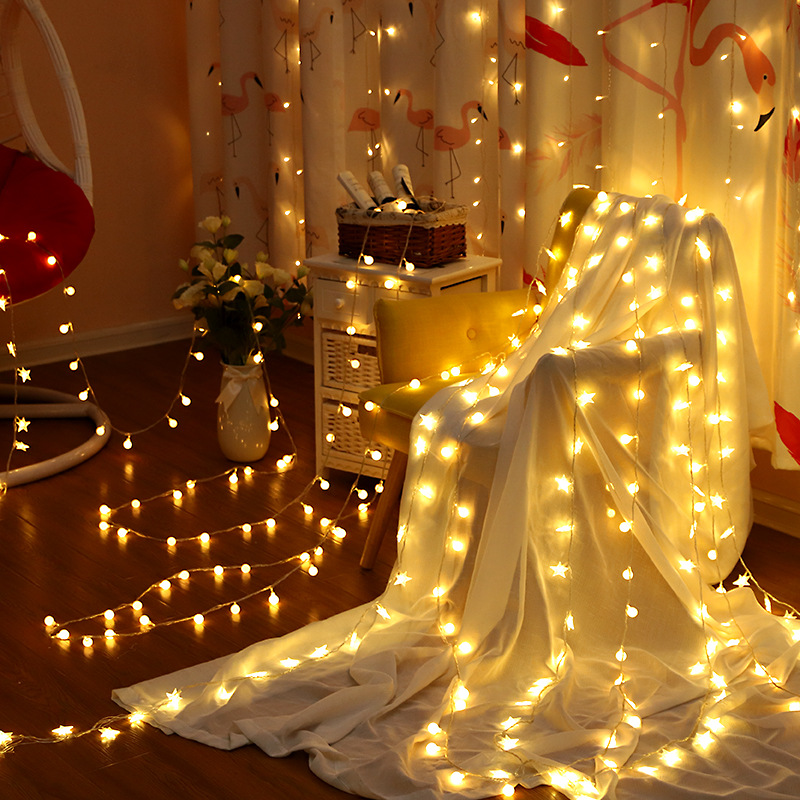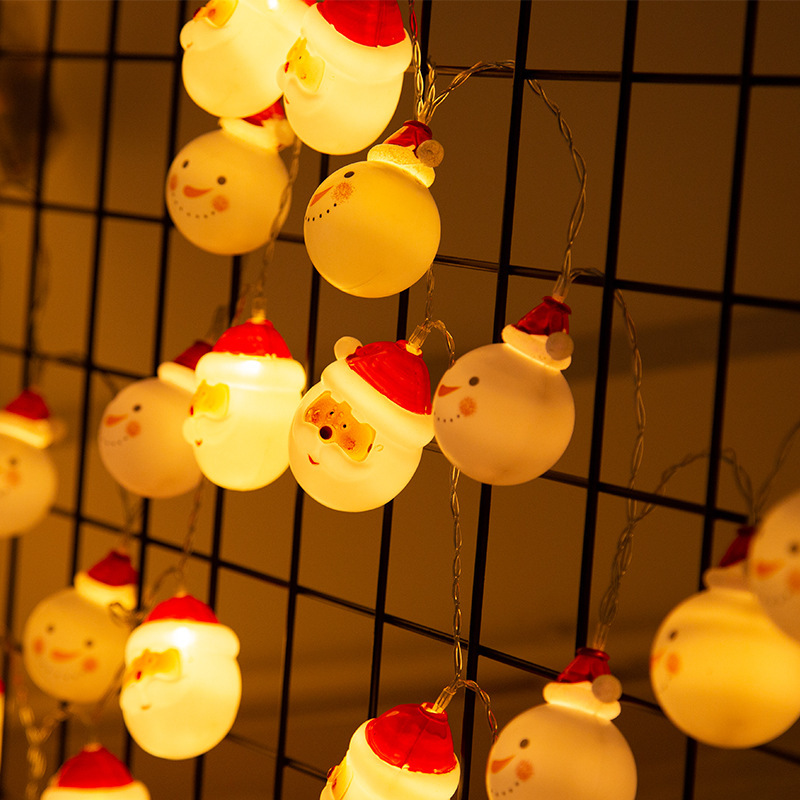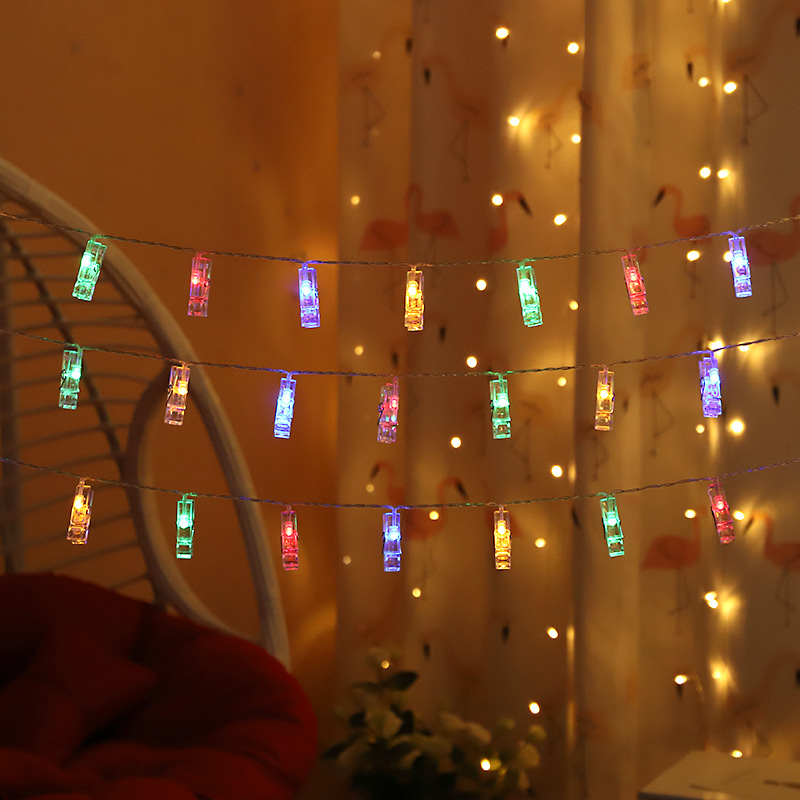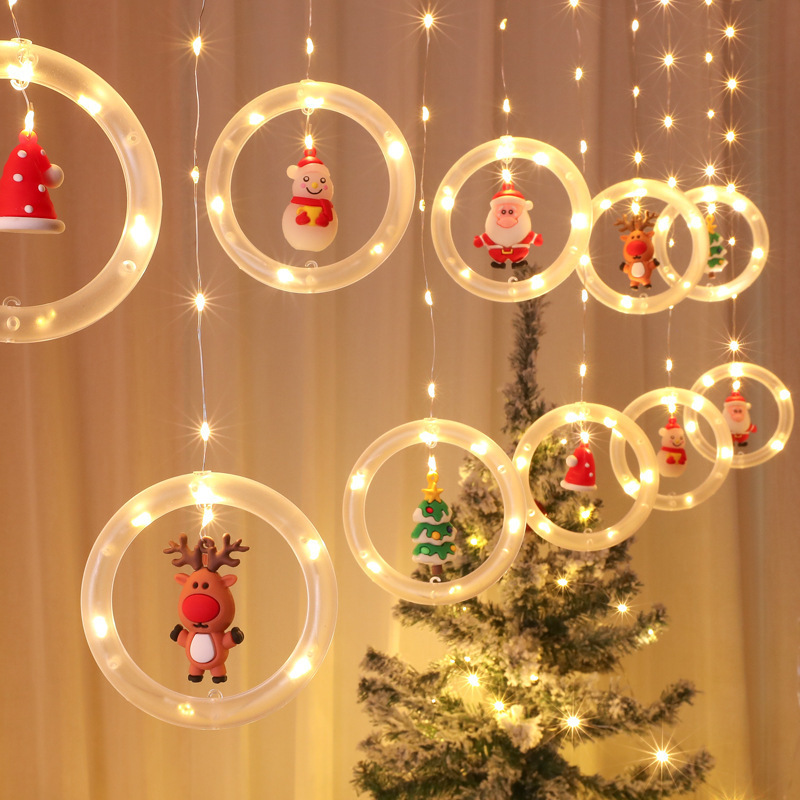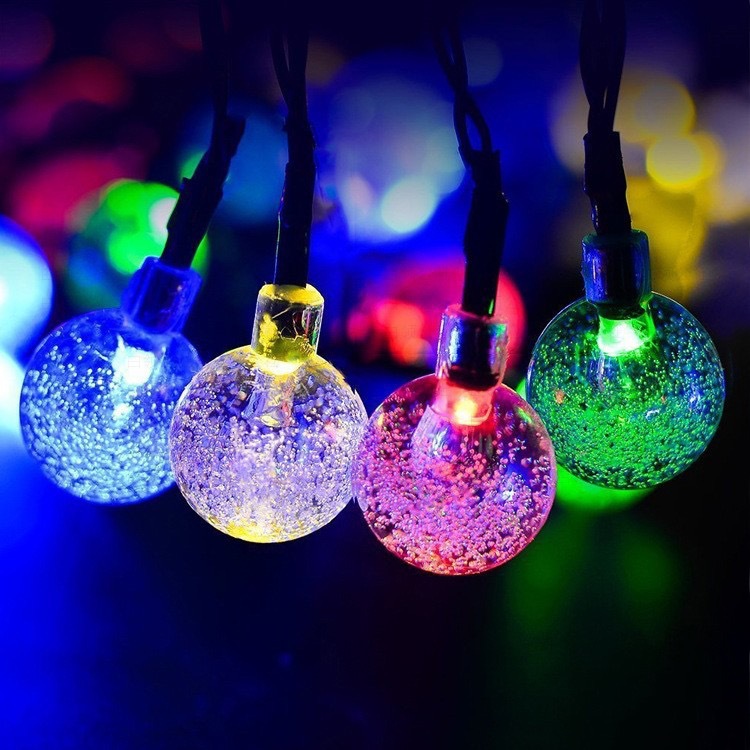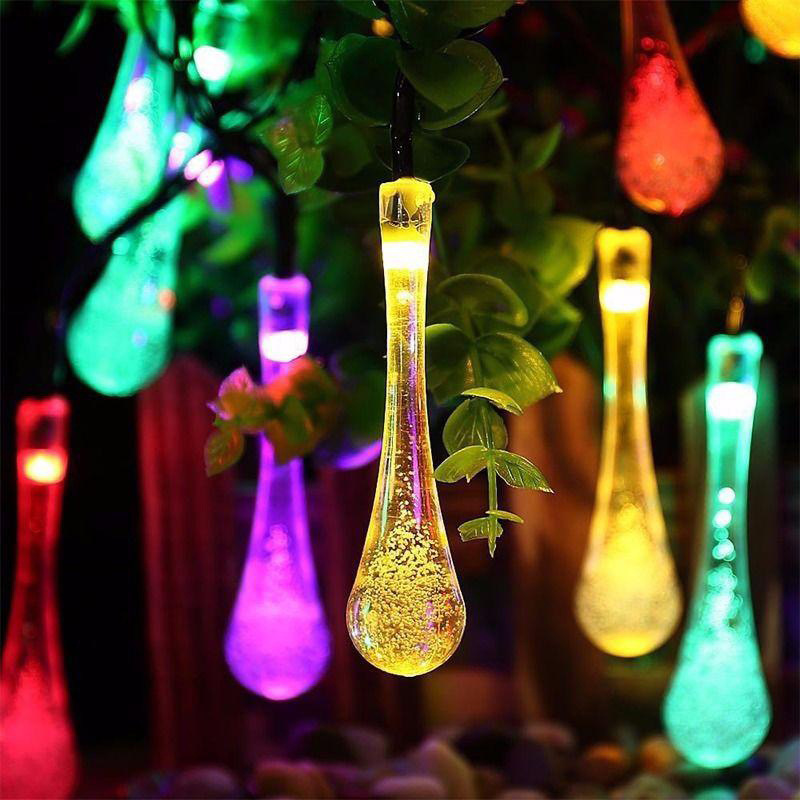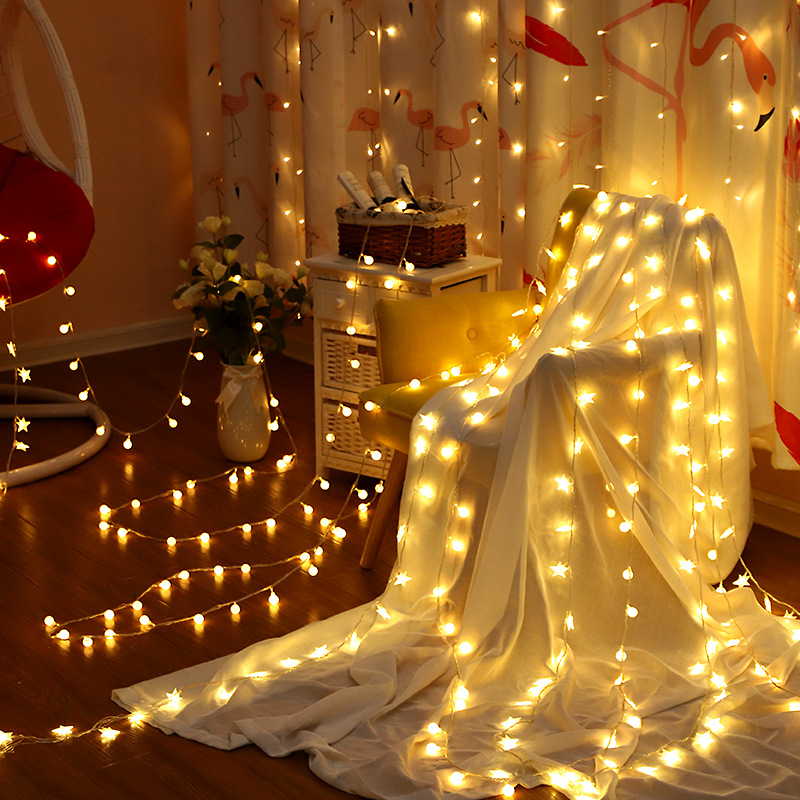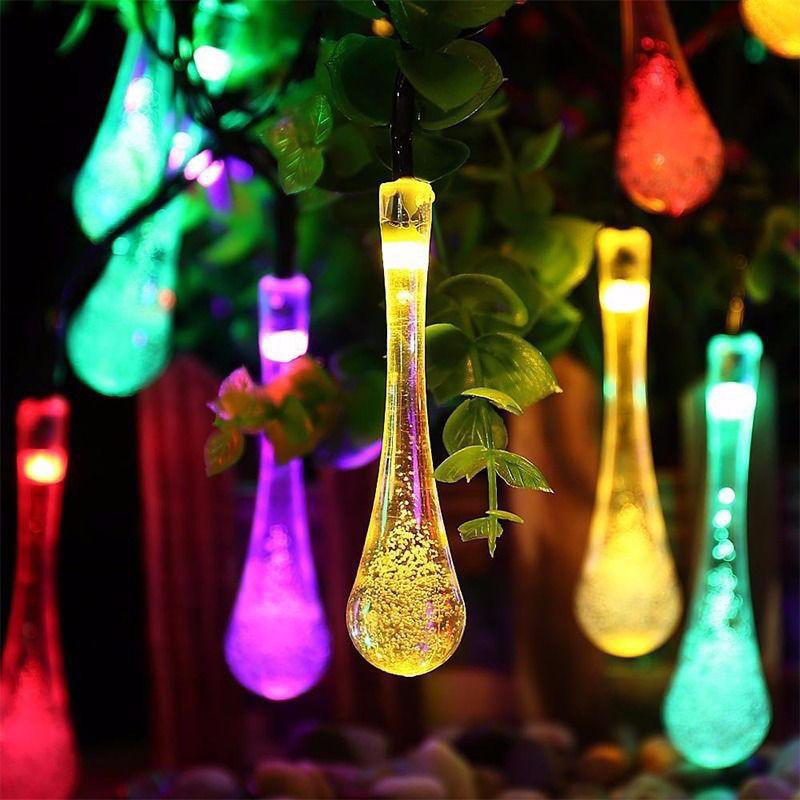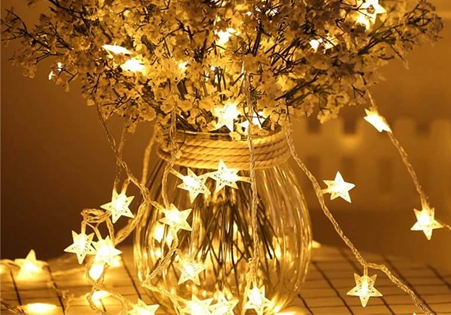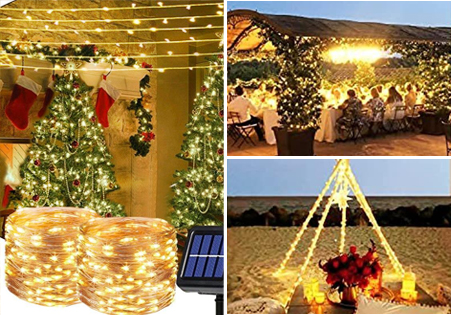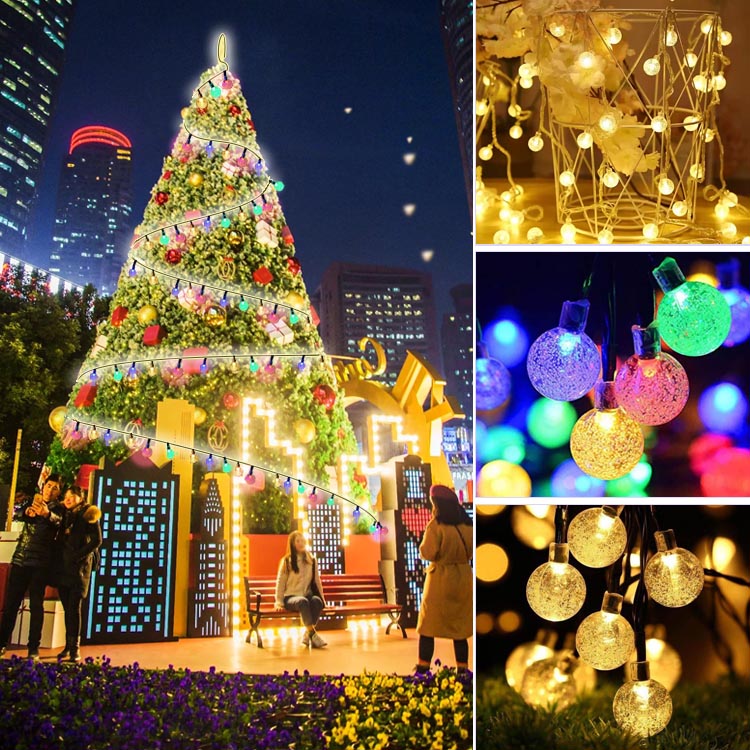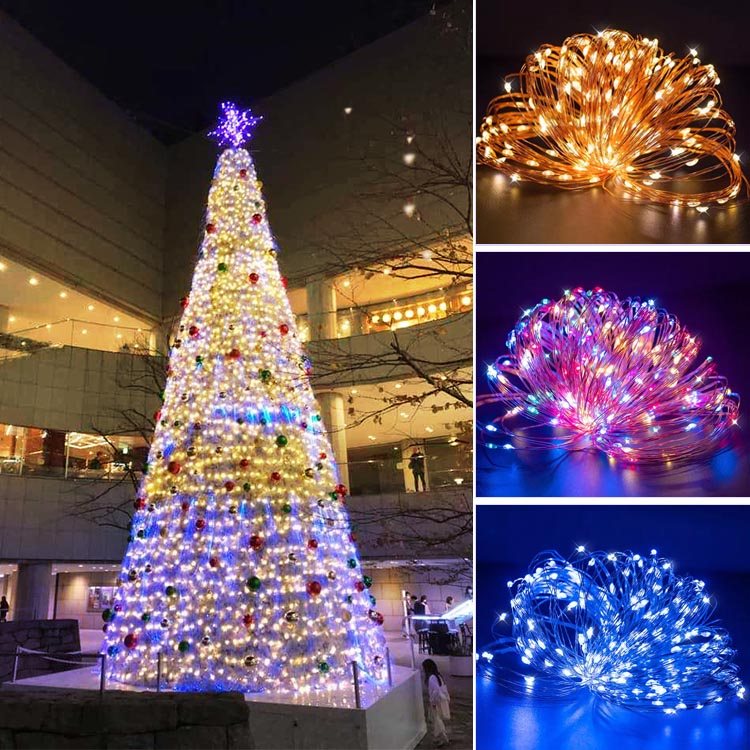When designing an indoor or outdoor lighting display, there are many types of Christmas lights to choose from. Use this guide to determine what kind of lights will best suit your decorating plans.
Where to Start
The exterior of a home with white icicle lights hung along the roofline.
Ask yourself the following questions to decide which type of Christmas lights to buy.
- Do I need incandescent or LED Christmas lights?
- What bulb shape or style best suits my design requirements?
- How many strands will it take to cover the area?
- Do I want white, colored or multicolor Christmas lights?
- What are the energy requirements?

-
LED and Incandescent Christmas Lights
-
Although both LED and incandescent string lights come in a variety of colors and bulb shapes, there are a few basic differences between them.
Incandescent Lights
LED Lights
- Use less energy than incandescent bulbs
- Are longer lasting; some LEDs are rated up to 100,000 hours
- Burn at a lower temperature
- Come in both warm- and cool-glow varietie
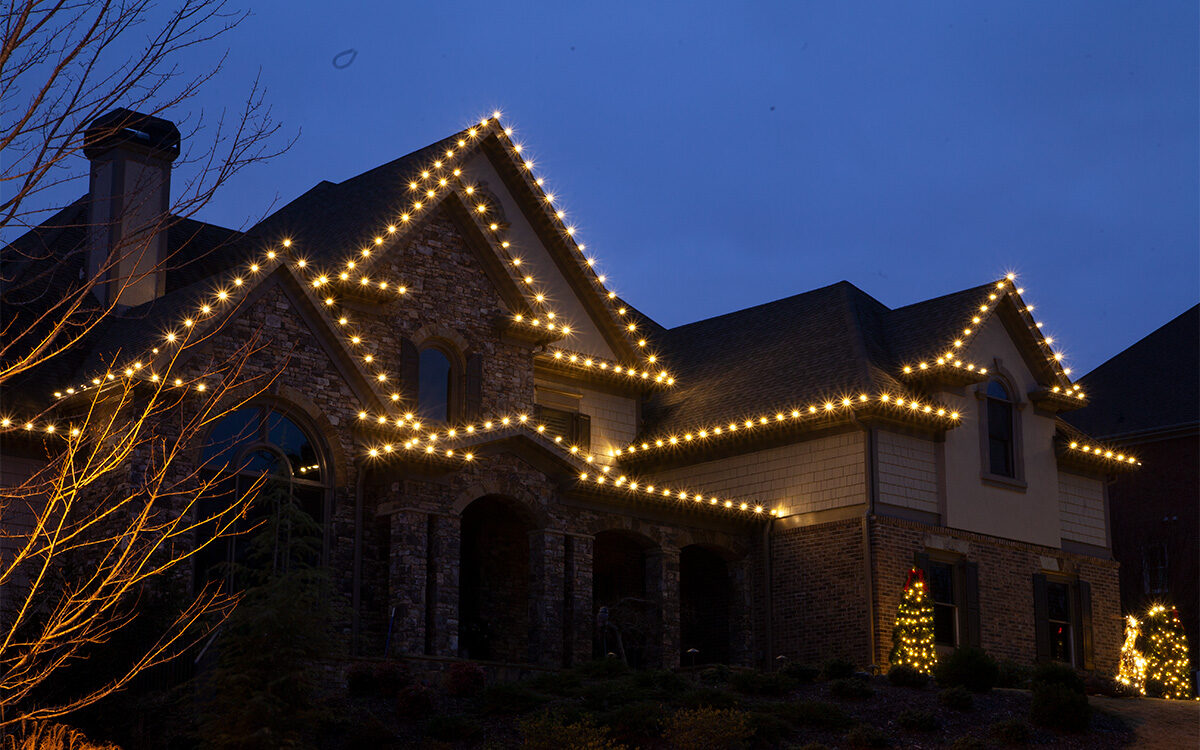
-
Types of Christmas Lights
Mini String Lights
Mini string lights have small bulbs and have remained popular for the past few decades.
Wide-Angle LED Mini Lights
Wide-angle LED mini lights have low-profile, conical bulbs that give off more light than some varieties and blend seamlessly into their surroundings when not in use.
Large-Bulb Lights
Large-bulb lights create visual impact and lend a retro feel.
Battery-Operated Lights
Battery-operated Christmas lights are great for displays that aren't near a power source or are located where cords could be unsafe.
Animated and Color-Changing Lights
Animated and color-changing lights add eye-catching action to your holiday display.
Net Lights
Net lights are already strung together into forms, making it easy to achieve a uniform look when you drape them across shrubs or structures.
Icicle Lights
Icicle Christmas lights give your home a whimsical, snow-covered appearance.
LED Rope Lights
LED rope lights are ideal for outlining doorways, windows and walkways. They're also a great option for creating intricate shapes and designs.
Christmas Light Show Projectors
Christmas light show projectors require no installation and are a timesaving alternative to traditional string lights. Simply plug them into an outlet, point them anywhere — at garage doors, indoor or outdoor trees, or dwellings — and instantly project vibrant LED patterns and colors.
Pathway Lights
Pathway lights include built-in stakes that let you easily light a walkway or driveway and are available in a variety of shapes and styles.
How Many Strands of Lights Will It Take to Cover the Area?
Although personal preference is the ultimate deciding factor, here are a few basic considerations:
- Bulb Spacing: Strands of Christmas lights with more space between bulbs are ideal for wrapping slender posts and tree branches. Strands with less space between bulbs are typically best for draping loosely around indoor trees or for lining roofs or overhangs.
- String Length: Two strands with the same number of lights will have different string lengths if their bulb spacing isn't identical.
Outdoor Trees
General Rule: For heavy lighting, plan for around 200 mini Christmas tree lights per vertical foot-and-a-half of tree. If you prefer medium lighting, 100 mini lights per foot should be enough.
Other Tips
- Slender trees will require the fewest number of lights.
- Dense evergreen trees, like pines, firs and spruces, may require more lights. Consider using larger-size bulbs for these.
- By wrapping bushes and shrubs with net or icicle lights, you’ll cover a greater area with fewer strands and less work.
- When covering tree branches, use lights with 6 to 8 inches of spacing between bulbs so that you can wrap wires tightly.
Indoor Christmas Trees
General Rule: Plan for approximately 100 mini Christmas tree lights per vertical foot-and-a-half of tree.
Other Tips
Choosing the Right Color
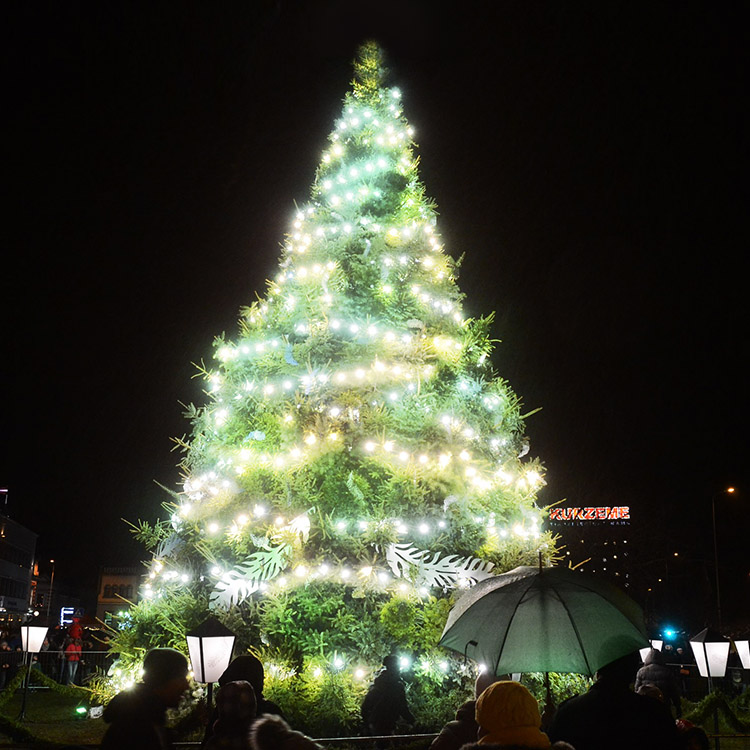
Some people have a strong preference for either colored or white Christmas lights, and here are a few considerations:
- White Christmas lights lend a timeless look, while colored lights are fun and festive. Plus you can coordinate them to create complex designs.
- Not all white LED lights are the same hue. Some give off a warm yellow glow, while others have a bluer tint.
- You can color block large areas with single-colored strands for a dramatic effect.
- Get children involved by allowing them to cover an assigned area with a color scheme of their choice.
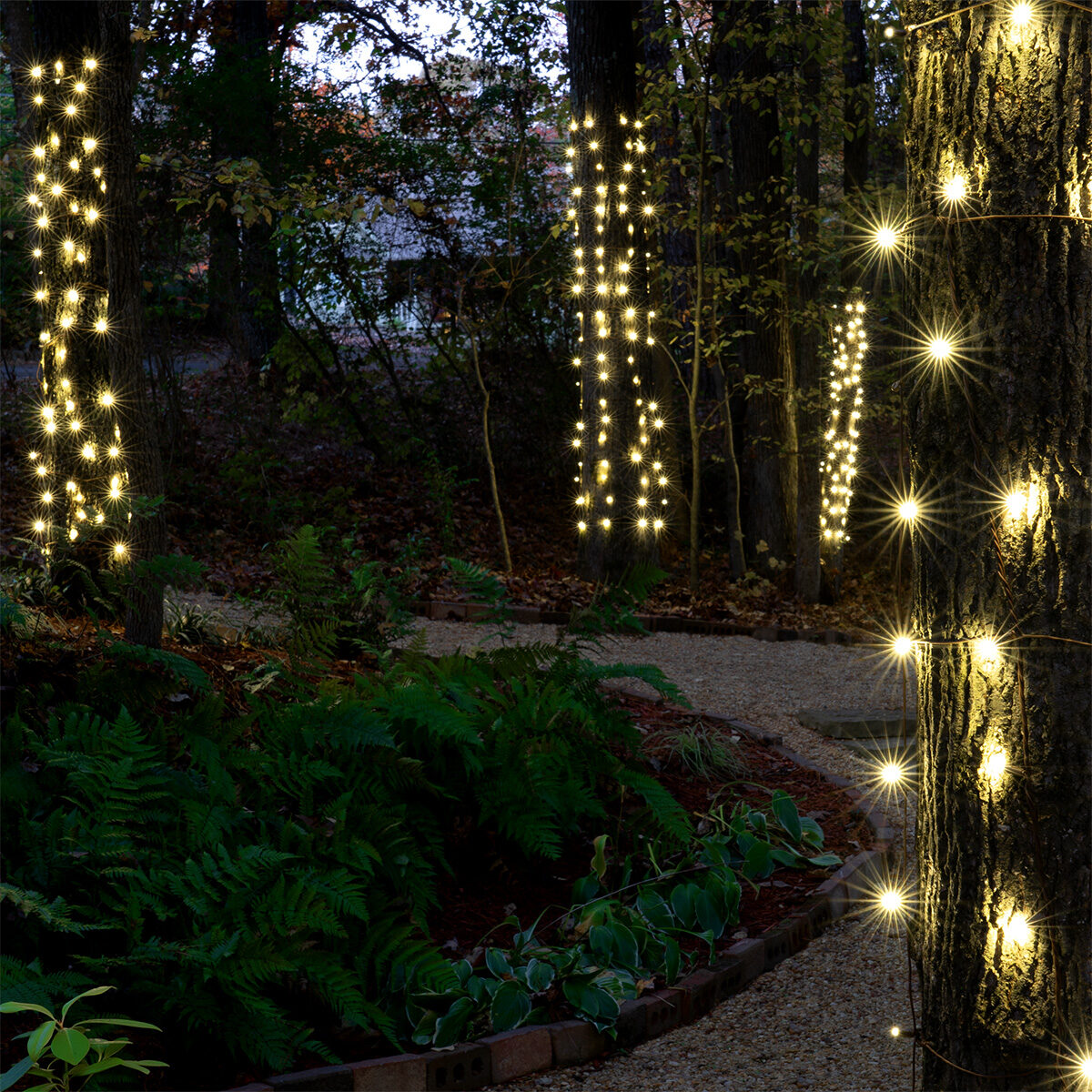
-

















